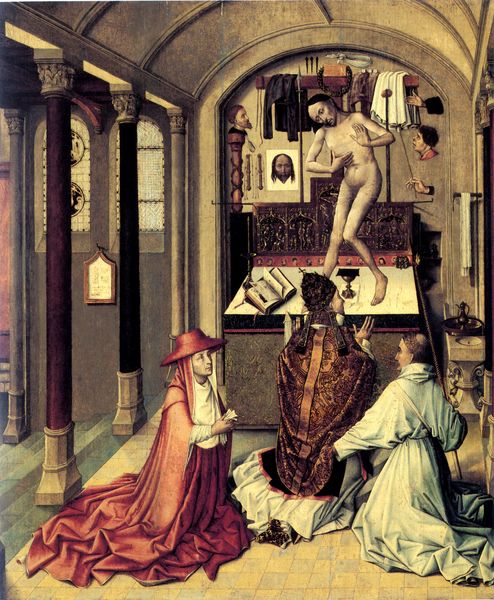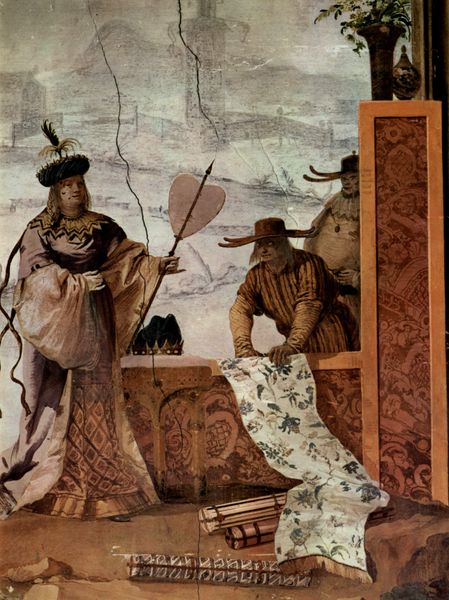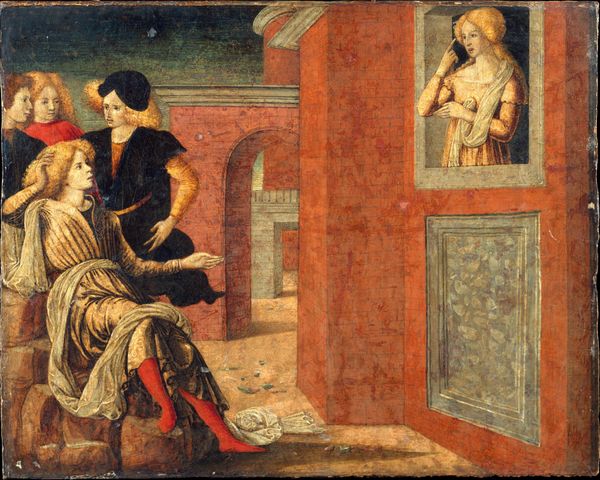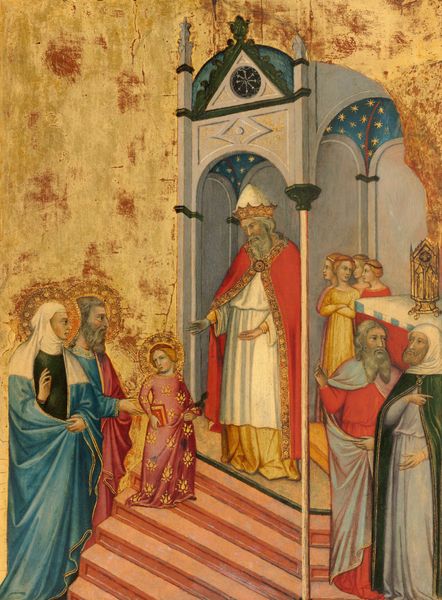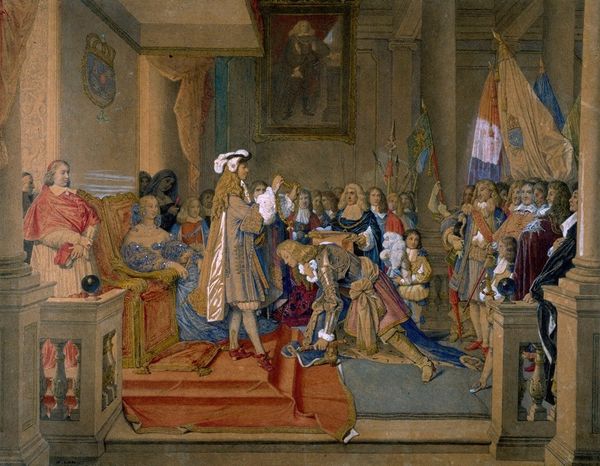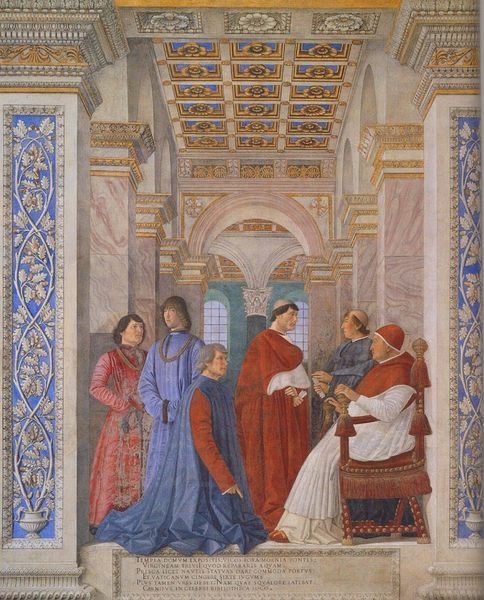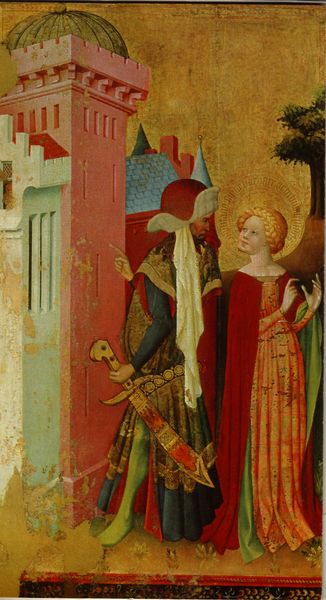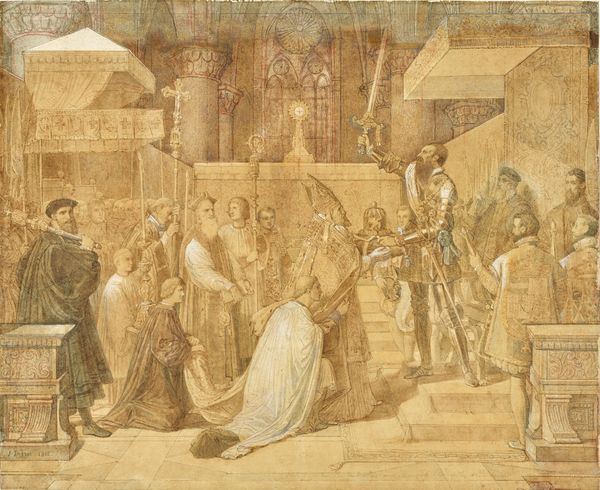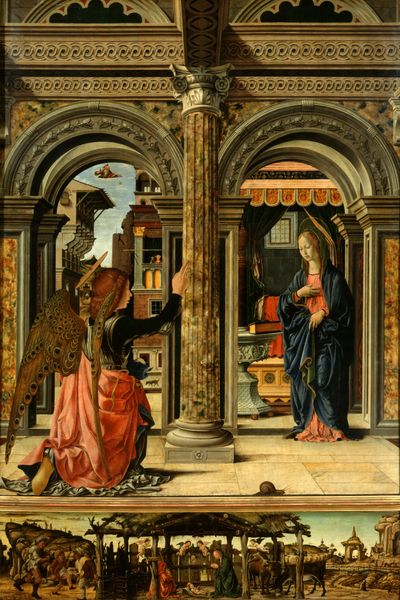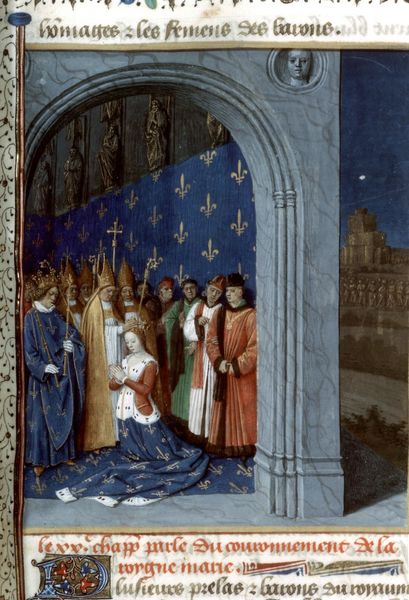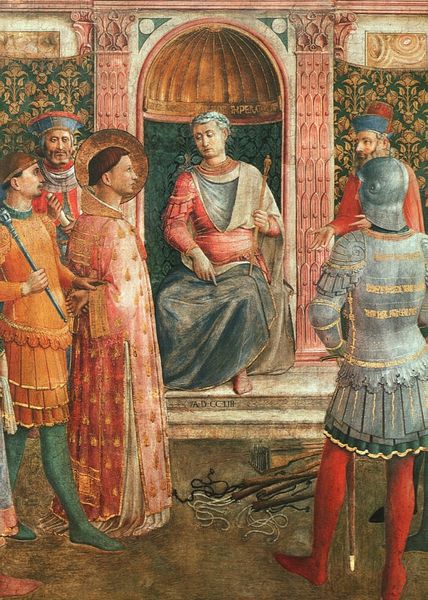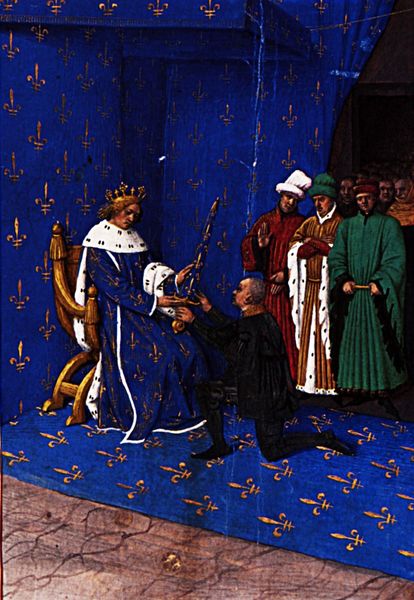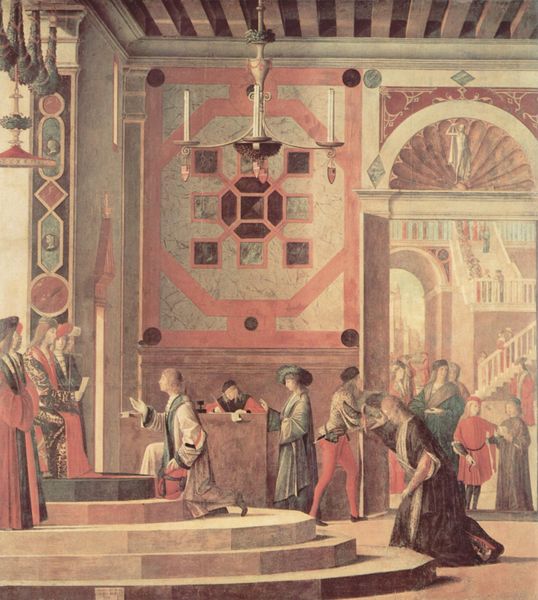
tempera, painting, oil-paint
#
portrait
#
narrative-art
#
tempera
#
painting
#
oil-paint
#
perspective
#
painted
#
figuration
#
oil painting
#
christianity
#
history-painting
#
italian-renaissance
#
early-renaissance
Dimensions: 30.9 x 29.8 cm
Copyright: Public domain
Curator: So, we're looking at Pietro Perugino's "St. Jerome who resurrected the bishop Andrea," painted around 1473. Editor: That's right. It's tempera and oil on panel, currently housed in the Louvre. There's something very still and formal about it, even with the supposed resurrection. It's like a tableau vivant. What do you make of it? Curator: The stillness is key. Consider the socio-political role of religious art at this time. Perugino wasn’t simply illustrating a miracle. He was participating in the construction of religious authority and solidifying its power structure. Notice the emphasis on hierarchical figures through clothing. What might the theatrical staging of this scene, in contrast to the gritty realities of illness and potentially dissenting beliefs, convey? Editor: So, it’s less about genuine religious experience and more about performative power? Curator: Exactly! Think about the patrons who commissioned such works. They often used these visual narratives to legitimize their own positions within the religious hierarchy. This painting doesn’t just tell a story; it actively *performs* a certain type of ideology that reinforced social hierarchies. What do you observe in the background and its architectural elements? How could it tie to our understanding? Editor: I hadn’t considered that. I guess the slightly awkward perspective, combined with the contained architectural space almost creates a stage, as you were implying, on which this scene plays out. It gives it a kind of forced, artificial feel. Curator: Precisely. By controlling the narrative visually, the Church controls the interpretation and therefore, the power dynamic. The artwork becomes a tool for upholding an uneven social structure, masked by spiritual transcendence. Editor: That's fascinating! It shifts my perspective entirely, seeing the painting as less a depiction of a miracle and more a careful performance of power dynamics. Curator: I am glad to hear it; this close looking has deepened my perspective on Renaissance art.
Comments
No comments
Be the first to comment and join the conversation on the ultimate creative platform.
